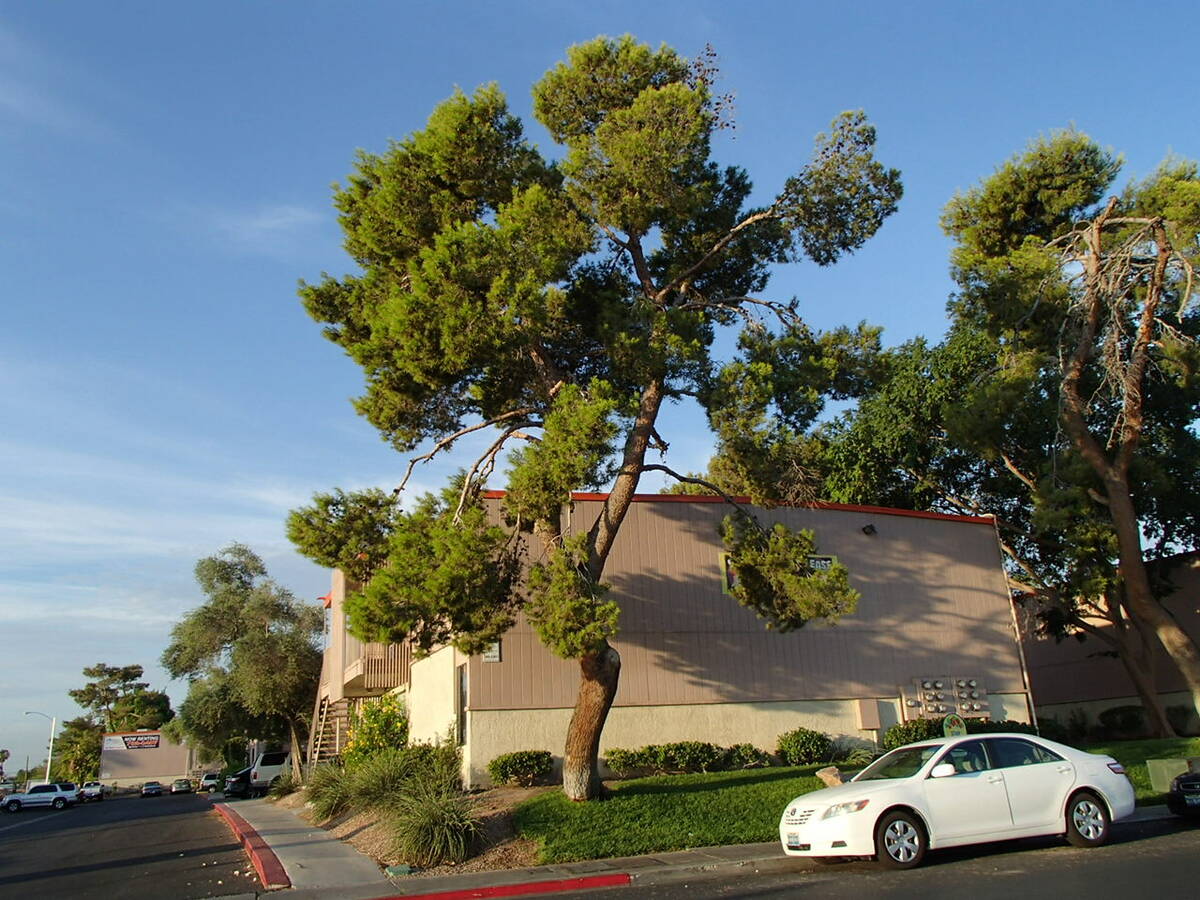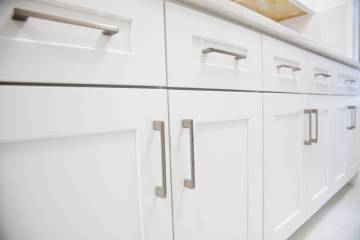Windy weather causes plants to use more water
Windy weather is very damaging to plants. (Notice I said “is” and not “can be.”) Light winds cause very little damage. Moderate winds cause moderate amounts of damage. Strong winds cause lots of damage. Why? I can think of at least two reasons: extent of damage and water use.
Vegetables grow the best when located closest to the downwind side of a windbreak. Plants don’t care if the windbreak is living or not, they just want the wind slowed.
For this reason, the best windbreaks are not solid walls (e.g., block walls) but perforated walls (e.g., chain-link fences with slats inserted in them).
Solid walls cause the wind to swirl. Perforated walls cause the wind to slow. Science has shown us the best windbreaks are about 80 to 90 percent solid, not 100 percent solid.
Examples of damage include leaf and flower damage with small fruit ripped from the tree. Plants grown in windy spots are smaller than plants grown in protected areas.
In strong windy locations, I have seen fruit trees that lean away from the wind. Wind damage to fruit trees is the worst on trees closest to the wind. Wind damage lessens on the second and third row of fruit trees.
Plant fruit trees in blocks so they give each other wind protection. Locate fruit trees that tolerate wind damage the most on the windward side of the block.
Examples of wind-tolerant fruit trees are pomegranates, apples and pears. These trees will protect the less wind-tolerant fruit trees. Fruit trees less tolerant of wind include citrus, plums, apricots and peaches.
Plants during windy weather use more water. Wind is a strong predictor of plant water use. In fact, along with how bright the sun is shining, it is one of the strongest predictors of plant water use.
Go outside in the morning. Look at the weather. Is it bright and sunny that day with very few clouds in the sky? That is the first predictor of high-water use.
Look at the trees. Are the leaves moving? Look at a flag flying on a flagpole. Is the flag barely moving? Is the flag flapping a lot? Is the flag rippling because of the wind? Those are indicators of wind strength.
Bright, cloudless skies and strong winds equals high water use in our desert climate. It’s time to water during bright windy weather.
Q: I’m finally having my empty backyard landscaped. It’s the typical subdivision super hard soil. Should it be amended somehow before the new plants are added? More than just in the hole where the plant goes, I mean.
A: I would recommend amending the soil in the planting hole with compost or another amendment. The hole for the plant should be dug and amended to a width three times the size of the diameter of the container or roots.
The hole does not have to be dug deeper than the container but should be dug three times the root width of the plants.
The only time the soil needs to be dug deeper than the container is when the soil is very bad at draining water. If a planting hole is filled with water and it drains this water overnight, then the drainage is good enough; three times the width of the roots/container is enough soil preparation.
If the water does not drain from the hole overnight, you should plant atop an embankment or a small hill. If you are planting a medium-sized shrub (6 to 10 feet tall) in this spot, then the soil in the amended mound or hill should be 12 inches tall and about 3 or 4 feet wide. Cover this soil with a mulch of some sort, either woodchips or rock depending on the type of plant.
Q: I need a hedge to block the dog area from view. Are there any drought-tolerant, full sun bushes that can handle extra nitrogen in the soil from the dog urine, or is there something I can add to the soil to balance that kind of nitrogen? I saw additives that claim to increase the beneficial microbes or bacteria or something like that to help the nitrogen cycle.
A: Any of the Texas rangers will work (aka, Texas sage). Green Cloud or Grey Cloud varieties of Texas rangers get about 10 feet tall and should be planted no closer than 8 feet apart or 8 feet from a solid wall.
There are shorter varieties of Texas rangers, like Compacta (5 by 5 feet and 4 to 5 feet from a solid wall) and Cimmaron (3 by 3 feet and 2 to 3 feet from a solid wall) that use less water because of their size and have a height more appropriate for some sites. They are still Texas rangers so how often they are irrigated is the same just give them less water each time they are irrigated.
But there are two caveats. Remember all plants use water, and the more larger-size plants you have in your landscape mean it can cost more (in water or pumping costs) to irrigate them. The second caveat is that people schedule when to water plants, plants don’t. It begs the question: Are plants responsible for water use or are people? You can give low-water-use plants more water than they need, and they won’t care.
All plants are damaged if the urine from a dog is in contact with any part of the plant. Generally, plant roots are more tender than stems. Usually, leaves of plants are about as tender as the roots.
The plant grows back from damaged stems if dog urine is sprayed directly on the leaves or roots. Having soil around the roots makes them less susceptible when in direct contact with dog urine.
How much less susceptible depends on the plants. But nearly all leaves are damaged. Stems will grow new leaves when damaged. Roots will grow new roots when damaged.
Be careful of marketing claims of products. Sometimes they are correct and sometimes they stretch the truth. In your case, I think you are talking about rejuvenating or renewing the soil rather than the plant.
Soil renewal is a totally different issue from plant renewal. Protecting the soil won’t protect the plant from urine damage.
Q: I am writing regarding the purchase and planting of a Eureka lemon tree. Of main concern to me is where to plant the tree, where to purchase the tree, what size tree to purchase, how often should it be watered and fertilized, and how big should I make the planting hole?
A: I recommend planting the variety called Improved Meyer lemon rather than a Eureka lemon for our area due to its tolerance to our colder winter temperatures. Meyer lemon begins its cold winter damage at about 25 degrees or a bit less, but Eureka lemon starts getting damage at freezing (32 degrees). That’s a 7-degree difference in cold tolerance not even considering wind damage.
Meyer lemon is not a true lemon like Eureka, but the flavor is very close.
If freezing weather threatens, wheel the tree and container into the garage until the freezing temperature is over then wheel it back out. You can try covering it with a frost blanket.
This gives the tree about 5 degrees of added protection (to about 27 degrees depending on the wind). You can try Christmas tree lights that radiate heat (it may help a few degrees), but again it depends on the wind.
The rest of the information you asked about is the same regardless of the variety. Depending on which variety you want, you may have to purchase it from an online nursery.
Select an average-sized tree, about 5 gallons in size, and plant it in the warmest microclimate you can find surrounding your house (usually it’s on the south or west side). Amend the soil with compost at planting time and dig the planting hole three times the width of the roots.
Plant it 8 to 5 feet from a warm wall and protect it from the wind. Stake it for at least one year if it is a 5-gallon size or larger. Plant wet. Cover the soil with woodchips when finished. Protect it from rabbits.
Use citrus fertilizer (e.g., Arizona’s Best) once in the spring but no more than twice during the year. More than that is not harmful but wasteful.
Bob Morris is a horticulture expert and professor emeritus of the University of Nevada, Las Vegas. Visit his blog at xtremehorticulture.blogspot.com. Send questions to Extremehort@aol.com.























